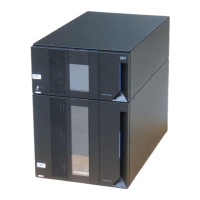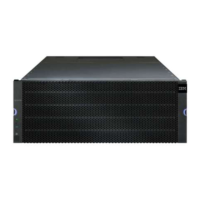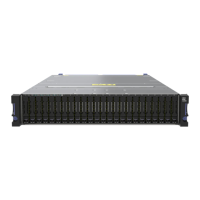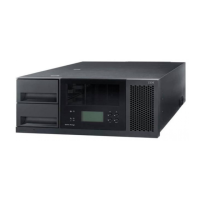Chapter 4. IBM System Storage DS planning and configuration 127
A minimum of two storage subsystems is required. One storage subsystem can have primary
volumes being mirrored to arrays on other storage subsystems and hold secondary volumes
from other storage subsystems. Also note that because replication is managed on a
per-logical drive basis, you can mirror individual logical drives in a primary storage subsystem
to appropriate secondary logical drives in several different remote storage subsystems.
Planning considerations for Enhanced Remote Mirroring
Here are some planning considerations:
DS5000 storage subsystems (minimum of two)
Fiber links between sites
Distances between sites (ensure that it is supported)
Switches or directors used
Redundancy
Additional storage space requirements
4.2.7 FC/SATA intermix
For some specific DS5000 storage subsystems, this intermix premium feature supports the
concurrent attachment of Fibre Channel and SATA storage expansion enclosures for a single
DS4000 or DS5000 controller configuration. With this premium feature, you can create and
manage distinct arrays or logical drives that are built from either Fibre Channel disks or SATA
disks in a DS4000 or DS5000 storage subsystem, and allocate the drives to the appropriate
applications in the attached host servers.
When planning your type of drives, consider these three classes of storage:
Online (or primary) storage is the storage for applications that require immediate access
to data, such as databases and frequently accessed user data. Primary storage holds
business-critical information and data with the highest value and importance. This storage
requires high performance and high availability technologies such as Fibre Channel
technology.
Near-line (or secondary) storage is used for applications that do not require immediate
access but still require the performance, availability, and flexibility of disk storage. It can
also be used to cache online storage to reduce the time required for data backups.
Secondary storage represents a large percentage of a company’s data and is an ideal fit
for Serial Advanced Technology Attachment (SATA).
Offline (archival) storage is used for backup or long-term storage. For this type of storage,
tape remains the most economical solution.
Now that we have identified that SATA technology is best suited to near-line storage usage,
we have the following considerations regarding its use in the same storage subsystem as
online storage:
Performance: Instead of having a storage subsystem for online storage and another for
near-line storage, both types of storage can be combined with one storage subsystem,
and use higher performing controllers.
Scalability: The total SATA disk capacity is far greater than the Fibre Channel offering.
The new EV-DDM and E-DDM drives are 1000 GB, as compared to the largest FC drive
being 450 GB.
Note: ERM requires a dedicated switched fabric connection per controller to be attached
to host port 4 on both A and B controllers.
This dedication is required at both ends of the ERM solution.
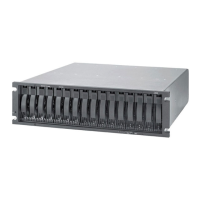
